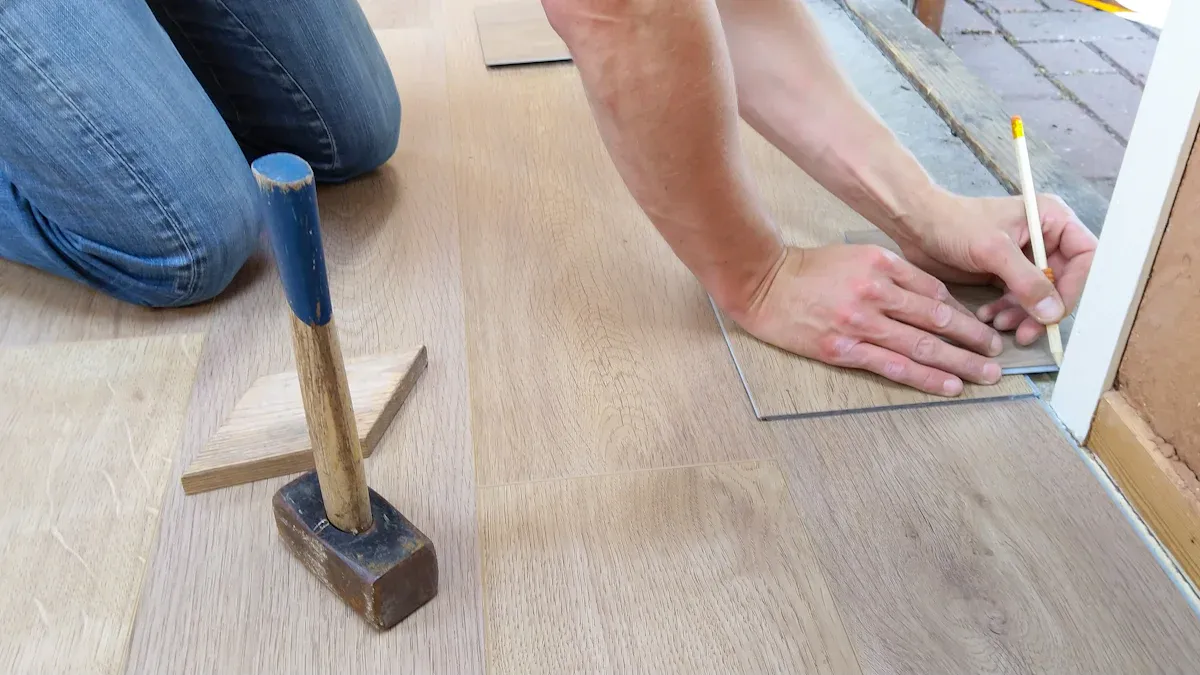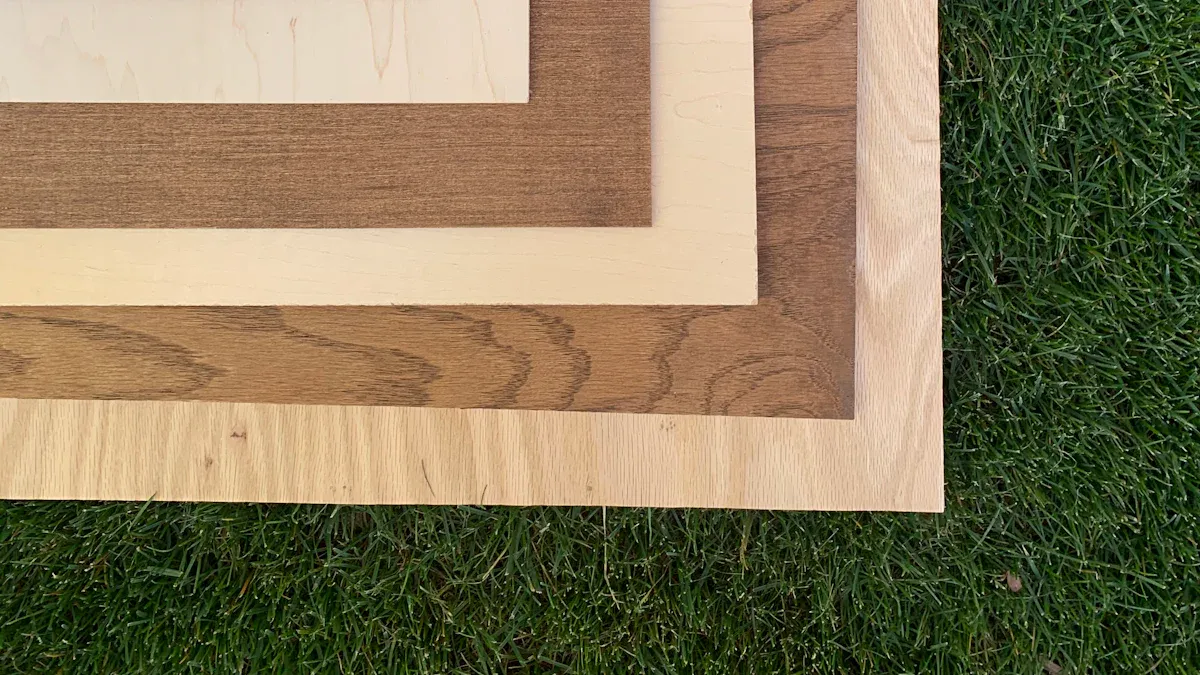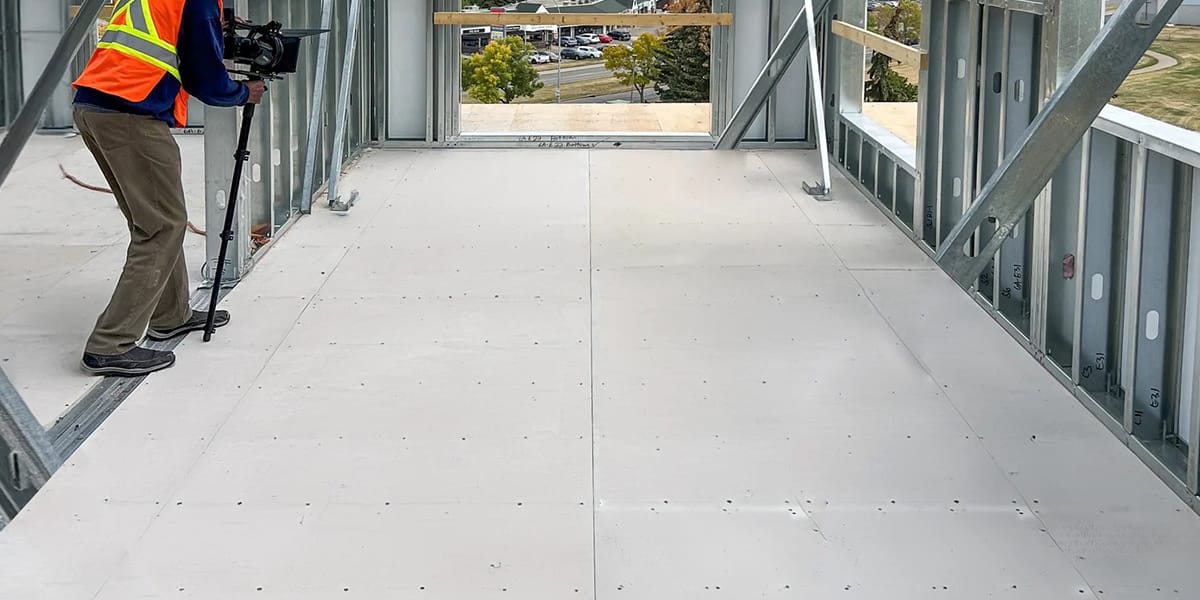
11 Sep The Three Types Of Substrate Floor
Table of Contents
You usually see three main kinds of subfloors in houses and buildings. The most common substrate floors are wooden, concrete, and particle board. MgO Board is another choice if you want something different. The right substrate floor helps your floor last longer and work better. If you pick a substrate floor with strong surface treatments, it will last longer, especially on concrete floors. Many studies show that using special mixtures and hardeners in a substrate floor can make it stronger and tougher. Concrete substrate floor with eco-friendly mixtures also handles heavy impacts better. You should always think about how long it will last when choosing from the common types of subflooring.
Key Takeaways
Pick the right substrate floor to make it last longer and work better. Strong surface treatments help your flooring last more years.
Know the difference between subfloor and substrate. The subfloor holds up weight. The substrate gives a smooth base for the top floor.
Think about using MgO Board because it resists fire and moisture. It is good for the environment and keeps air clean and safe.
Use plywood or OSB in dry places for a cheap and strong choice. They give good support for many types of floors.
Always look for moisture and damage before putting in new flooring. A good subfloor helps your floor look nice and last long.
Substrate Floor and Subfloor Basics
What is a Substrate Floor?
You may ask what a substrate floor does. The substrate floor is the bottom layer under your floor. It holds up everything that goes on top. This layer keeps your floor steady and stops cracks or dips. If you get the substrate floor ready, your top floor will be smooth. The substrate floor also blocks water from getting in and ruining your floor. In today’s floors, the substrate floor is very important. It helps your floor last longer and work better. Always make sure the substrate is ready before putting in new flooring.
Tip: If you prepare the substrate floor well, your floors will stay strong and look nice for a long time.
What is a Subfloor?
The subfloor is the main layer that sits on the joists. It holds up the whole floor above it. The subfloor takes the weight of people, furniture, and other things. It keeps the floor from moving or dipping. You need a good subfloor to keep your floor safe and sturdy.
Here is a simple table that shows how a subfloor and a substrate are different:
Term | Definition |
|---|---|
Subfloor | A strong layer that goes under the underlayment. |
Substrate | A flat surface made for the final floor, like concrete or underlayment. |
There are a few main materials used for subfloors in homes:
Plywood: This is the most common, usually ¾” tongue-and-groove plywood.
Oriented Strand Board (OSB): Like plywood, but often costs less.
Concrete: Very strong, but needs to be kept dry.
Mixed Subflooring: Uses both concrete and plywood or OSB for more strength.
Remember, the subfloor gives the main support for your floor. The substrate floor makes a smooth base for your finished floor.
Types of Subfloors
 MgO Board Subfloors
MgO Board Subfloors
MgO Board is a newer subfloor material. It is strong, safe, and good for the environment. MgO Board does not burn easily. It also keeps out water and mold. This makes it a smart pick for places where safety and moisture matter.
Here is a table with the main features of MgO Board subfloors:
Feature/Characteristic | Description |
|---|---|
Fire Resistance | Ensures safety in case of fire. |
Moisture and Mold Resistance | Prevents damage in wet environments and inhibits mold growth. |
High Durability and Strength | Suitable for heavy foot traffic and long-term use. |
Lightweight Design | Easier handling during installation. |
Excellent Sound and Thermal Insulation | Improves indoor comfort. |
Compatibility with Various Materials | Offers flexibility in design choices. |
Eco-friendly and Recyclable | Reduces environmental impact. |
Dimensional Stability | Resists warping and swelling over time. |
MgO Board does not let out bad chemicals like formaldehyde or VOCs. This helps keep your air clean and safe. MgO Board stays strong after many tests. It does not break easily, even with heavy use.
Note: MgO Board is great for homes, schools, and hospitals. It is best where safety and clean air are important.
Here is a quick look at the pros and cons:
Advantages | Disadvantages |
|---|---|
Durability and Longevity | Higher Initial Costs |
Fire Resistance and Safety Benefits | Limited Availability in Certain Markets |
Moisture and Mold Resistance | Installation Challenges and Skill Requirements |
Eco-friendly | Possible Problems with Material Compatibility |
Pick MgO Board if you want a subfloor that lasts and keeps your space healthy. It is best for places that need extra fire or water protection.
Wooden Subfloors
Wooden subfloors are very common in houses. You will see plywood, OSB, and old wood planks used. These subfloors give a strong and steady base for most floors.
Here is a table showing the most common wood products and their typical thicknesses:
Type of Wood Product | Typical Thicknesses |
|---|---|
Solid Hardwood | 3/4 inch (19mm) |
| 5/16 inch (8mm) |
| 1/2 inch (12mm) |
Engineered Hardwood | 3/8 inch (10mm) |
| 1/2 inch (12mm) |
| 5/8 inch (15mm) |
Plywood subflooring is strong and does not sag much. OSB is cheaper and still gives good support. Old floorboards can work, but they may not be as steady as new materials.
Here is a table comparing plywood and OSB:
Material | Pros | Cons |
|---|---|---|
OSB | – Economical choice, typically 15-30% less than plywood. | – Not moisture proof; can swell and warp if wet. |
| – Structurally strong with excellent load-bearing capabilities. | – Weaker across the width compared to plywood. |
| – Easy to work with using standard tools. | – Prone to damage during transport and installation. |
| – Water resistant due to modern adhesives. | – Contains formaldehyde, which can irritate during cutting. |
| – Available in various grades to match application needs. | – Rough appearance unsuitable for decorative surfaces. |
Plywood | – Strong and stiff, resists sagging. | – More expensive than OSB and other composites. |
| – Dimensionally stable, resists warping and twisting. | – Heavy and bulky, difficult to handle. |
| – Attractive appearance with layered veneers. | – Prone to delamination with excessive moisture. |
| – Moisture resistant when properly sealed. | – Not suitable for all structural uses. |
| – Available in a wide range of types for different applications. | – Lower grades may have voids and defects affecting strength. |
Tip: Always check your plywood subfloor before adding new flooring. Replace any weak or broken spots.
Use plywood or OSB subflooring in dry rooms. They give a flat, strong base for carpet, tile, or hardwood.
Concrete Subfloors
Concrete subfloors are very strong and last a long time. You will see concrete slabs in basements, garages, and some ground-level rooms. Concrete gives a solid base for heavy floors like tile or stone.
But concrete subfloors have some problems:
Concrete soaks up water, which can hurt your floor.
Changes in temperature and humidity make moisture control harder.
High humidity, leaks, or poor curing can cause problems.
You may also have these issues:
Concrete must be flat or tiles will not stick well.
Too much moisture can weaken glue and cause mold.
Concrete can crack as it moves and changes.
Note: Always test your concrete for moisture before putting down flooring. Use a vapor barrier if you need one.
Concrete subfloors are best where you need strength and long life. Use them in basements, garages, or places with heavy use.
Particle Board Subfloors
Particle board is made from small wood pieces and glue. Some homes use it as a subfloor, but it is not as strong as plywood or OSB.
Here is a table comparing particle board to other engineered wood products:
Characteristic | Particle Board | Other Engineered Wood Products |
|---|---|---|
Cost | Less expensive | Varies (often more expensive) |
Weight | Lighter | Heavier |
Sound Insulation | Provides some sound insulation | Varies |
Ease of Cutting | Relatively easy to cut | Varies |
Strength | Weaker | Generally stronger |
Moisture Vulnerability | Vulnerable to warping and swelling | More resistant |
Lifespan | 2 to 3 years with normal usage | Longer (varies by type) |
You should know that particle board has some big problems:
It soaks up water fast.
Even small spills can ruin it.
If it gets wet, you may need to replace it.
Water can cause mold and mildew, which is unhealthy.
Particle board swells, warps, or falls apart when wet.
It is not good for kitchens, bathrooms, or damp places.
Warning: Do not use particle board subfloors in wet areas. Pick stronger subflooring for better results.
You can use particle board in dry rooms if you want a cheap option. But it will not last as long as plywood or concrete.
Types of Subfloor Materials Comparison

Key Differences
You will find big differences between the types of subfloor materials. MgO Board stands out for fire and water resistance. Wooden subfloors like plywood and OSB cost less but do not handle moisture well. Concrete subfloors last a long time and work best in wet areas. Particle board is the cheapest subfloor material, but it swells and breaks down with water.
Here is a quick table to help you compare:
Subfloor Material | Installed Cost per Sq.Ft. (USD) | Durability | Moisture Resistance | Maintenance Needs |
|---|---|---|---|---|
Plywood | $2.75 – $6 | Good | Low | Moderate |
OSB | $2.50 – $4.50 | Fair | Low | Moderate |
MgO Board | $$ | Excellent | High | Low |
Particle Board | $ | Poor | Very Low | High |
Concrete | $$ | Excellent | High | Low |
Tip: If you want the best subflooring material for wet rooms, pick concrete or MgO Board.
Pros and Cons
Each subflooring type has strengths and weaknesses. You should know these before you choose.
MgO Board
👍 Durable, fireproof, waterproof, low maintenance.
👎 Costs more, harder to install.
Wooden Subfloors (Plywood, OSB)
👍 Affordable, easy to work with.
👎 Weak against water, needs more care.
Concrete Subfloors
👍 Very strong, lasts long, resists water.
👎 Higher cost, heavy, needs skilled installation.
Particle Board
👍 Cheapest option, easy to cut.
👎 Weak, swells with water, short lifespan.
Note: You should avoid particle board in bathrooms or basements.
Best Applications
You need to match the subfloor material to your space. Here are some ideas:
Use MgO Board in places where you want safety and clean air, like hospitals or schools.
Pick concrete subfloors for basements, garages, and bathrooms. Concrete works well with tile, vinyl, and stone.
Choose plywood or OSB for dry rooms like bedrooms and living rooms.
Use particle board only in dry, low-traffic areas if you want to save money.
If you want the best subflooring material for high-traffic commercial spaces, concrete and MgO Board work best. For homes, wooden subfloors give good support in most rooms. Concrete and cement board are the best subflooring material for wet areas.
Remember: The types of subfloor materials you choose will affect how long your floor lasts and how much work you need to keep it in good shape.
Choosing Subflooring
Decision Guide
When you pick subflooring, think about your project. First, look at the flooring you want. Tile and stone need a strong, flat base. Check how busy the room will be. Busy rooms need tough subflooring. Think about how you use each space. Kitchens and bathrooms need subflooring that resists water. Bedrooms and living rooms can use wood-based subflooring.
Pay attention to humidity and moisture. High humidity means you need better moisture control. Building codes help you choose the right material. Some codes want non-combustible materials in fire-prone areas. Other codes want moisture resistance in damp places. Always check the rules before you start installing subflooring.
Here is a table showing how building codes affect your choices:
Building Code Requirement | Implication on Subfloor Material Selection |
|---|---|
Use concrete or treated wood in fire-prone areas. | |
Moisture resistance in damp areas | Use treated plywood or concrete in basements. |
Structural integrity for load-bearing applications | Pick strong materials like OSB or engineered wood. |
When you plan subfloor installation, use these criteria:
Evaluation Criteria | Description |
|---|---|
Performance Metrics | Impact absorption, noise reduction, slip resistance, ball bounce |
Practical Considerations | Installation time, maintenance, environment, budget |
Tip: Always check your subflooring before new floors. Look for gaps, moisture, and damage.
Common Scenarios
Different subflooring types are used in homes and buildings. In houses, plywood works well in dry rooms. OSB is strong and saves money. Concrete is best for basements and wet places. Multi-unit buildings may need special panels for weather.
Commercial spaces need subflooring for heavy loads. Polished concrete is strong and easy to clean. Epoxy-coated concrete resists spills and chemicals. Reinforced concrete slabs hold the most weight. Urethane cement and high-density tiles work in factories and warehouses.
Here are mistakes to avoid during subfloor installation:
Leave a 1/8-inch gap between panels.
Do not use wet lumber. Dry joists stop nail pops.
Let OSB dry before adding sensitive materials.
Use the right nail size and spacing to stop squeaks.
Always use glue for a strong floor.
Follow glue instructions from the manufacturer.
Use small amounts of glue for strength.
Do not hit edges too hard.
Check your work before finishing.
Remember: The right subflooring and careful installation help your floors last longer and stay safe.
You can pick from different subfloor materials. Each one has its own good and bad points. The table below shows how they are different:
Material | Advantages | Disadvantages |
|---|---|---|
Wooden | Keeps heat in, easy to put down | Gets damaged by water, bugs |
Concrete | Strong, does not burn | Very heavy, hard to put in |
Particle Board | Not expensive, easy to cut | Not strong, soaks up water |
MgO Board | Does not burn, good for nature | Costs more, not used as much |
Most people use plywood or OSB in their homes. Concrete is best for basements or busy rooms. MgO Board is good if you need more safety. Make sure your subfloor is flat, dry, and clean before you start. A flooring expert can help you find problems and choose the right subfloor for your job.
FAQ
What is the best subfloor for wet areas?
You should use concrete or MgO Board in wet areas. These materials resist water and mold. They last longer in bathrooms, basements, and laundry rooms.
Can you put new flooring over old particle board?
You should avoid this. Particle board swells and breaks with moisture. It does not support new floors well. Replace it with plywood or another strong subfloor before installing new flooring.
How do you know if your subfloor needs replacing?
Look for soft spots, squeaks, or sagging. Water damage, mold, or a musty smell also mean trouble. If you see these signs, you should replace your subfloor.
Is plywood or OSB better for subfloors?
Plywood gives you more strength and resists sagging. OSB costs less and works well in dry rooms. For wet areas, plywood is the safer choice.
Can you install tile directly on a wooden subfloor?
You should not install tile right on wood. Wood moves and can crack tiles. Use a cement board or special underlayment over the wood before laying tile.

 MgO Board Subfloors
MgO Board Subfloors